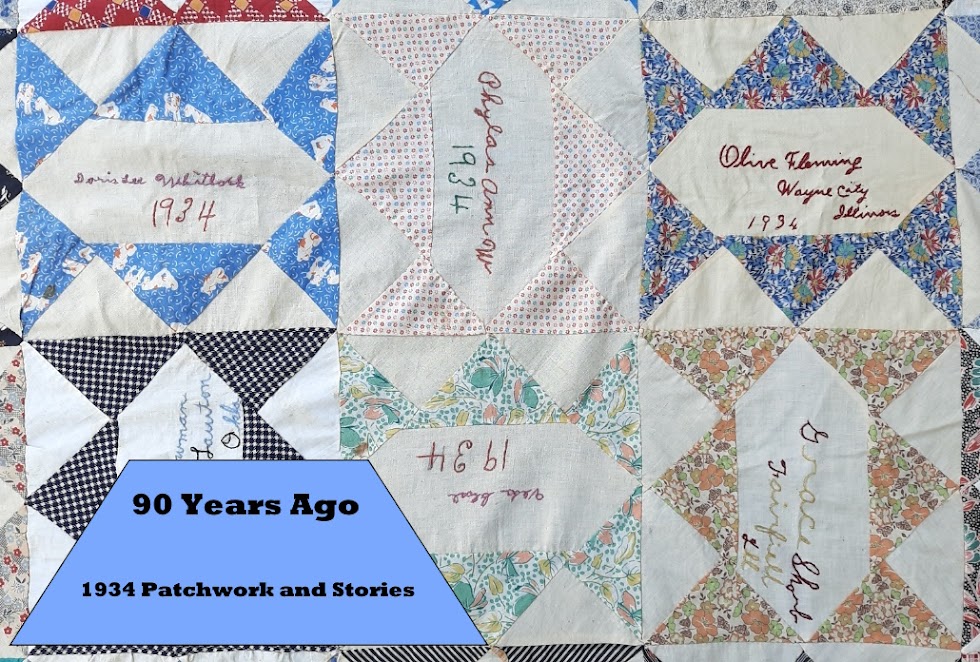I was searching for publication dates for the patchwork block Cracker a few weeks ago. According to BlockBase it first appeared in 1931 in The Patchwork Book. Serendipitously my watch list on eBay had a copy of The Patchwork Book and although the freight was three times as much as the book I managed to justify the purchase. So here it is.
The Patchwork Book was published in Chicago by the Woman's World Service Library. It is a catalogue of patterns that can be purchased by mail as well as some social commentary on quilt making. It is sixteen large pages, all in colour.
One of the most interesting things I found in The Patchwork Book is the naming of the patchwork blocks. Names were not yet set in stone because not many quilt books had been published; patchwork designs still showed regional variation.
Cracker is in the bottom right hand corner. The green block above it the Peek-Hole, now more commonly known as Necktie or Bowtie. The blocks on the left hand side have similar unusual names; Dragon's Head (Churn Dash), Aeroplane (Monkey Wrench) and Signal Design (Goose Tracks).
And while you were stitching away you could reflect on these gems of wisdom from The Patchwork Book.
In Colonial times the art of patchwork quilt making reached a high perfection in America. As our great-grandmothers were forbidden to wear bright colors, patchwork quilts became the medium of expression for their love of them, and into their fine stitches they wove their dreams, their aspirations.
Feminine fancy for this season decrees pillows - more pillows - and still more pillows. When the demand is so unmistakable as this feminine, nation-wide interest in pillows, we feel we just have to do our part to make this sensible interest both an artistic and a practical adventure in home-making.
These historic pillows which we present for your consideration on this page are as much a part of American life and tradition as is the American flag - for they show the spirit and patriotism of our home-making women during the last two hundred years.
Better go make some pillows.















